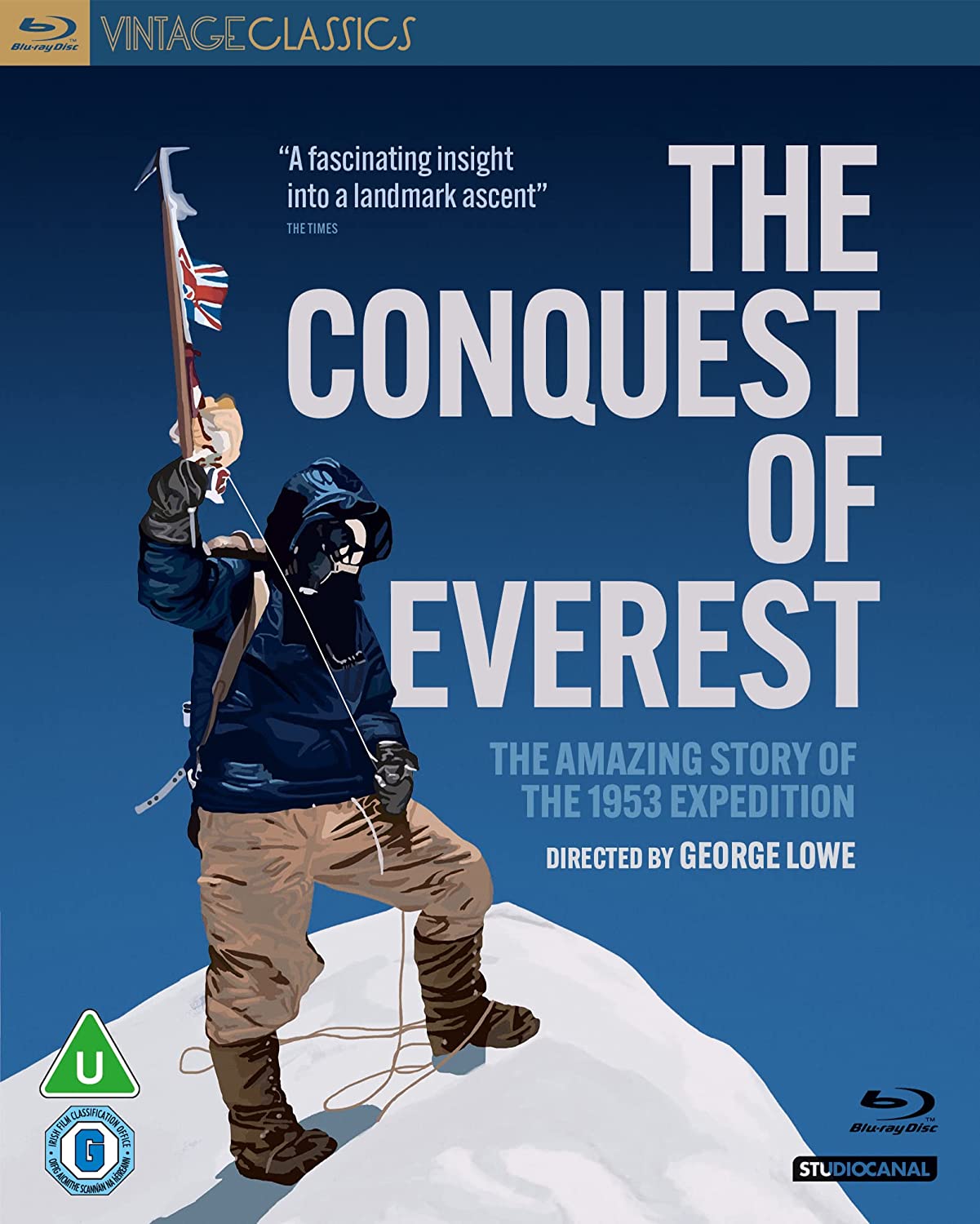Studio Canal’s restored print of the 1953 documentary The Conquest of Everest is so sharp, so clear that initially it’s hard to believe that we’re not watching a studio reconstruction. Skies, snowscapes and sunlit uplands glow; it’s only in the perilous final stages that things turn murkier.
Do listen to the bonus interview with producer John Taylor, recounting his struggle to get the film financed after a tip off that a British attempt to climb Everest was imminent, and the mad rush to edit the footage against a very tight deadline. Poet Louis MacNeice’s hastily-written commentary, spoken by actor Meredith Edwards, is very much of its time; this expedition was organised by a nation still coming to terms with its diminished post-war status, the text full of military metaphors. These gallant chaps weren’t just climbing Everest, they were assaulting it, and once the deed was done, “Britain had won a new victory.”
 That aside, the film makes for thrilling viewing. Early scenes showing the preparations suggest what a low-budget British moon mission might have looked like, with vacuum-packed squares of unappetising grey food and a tweed-clad boffin struggling to remain sentient whilst sat in a decompression chamber.
That aside, the film makes for thrilling viewing. Early scenes showing the preparations suggest what a low-budget British moon mission might have looked like, with vacuum-packed squares of unappetising grey food and a tweed-clad boffin struggling to remain sentient whilst sat in a decompression chamber.
Lightweight tents were tested in a wind tunnel at RAF Farnborough. The bulk of the material was shot by expedition members Tom Stobart and George Lowe (the latter credited as director), both men given basic training on how to shoot cine film and supplied with cigarette packet-sized experimental cameras to use as the ascent progressed. There are no fancy infographics, the route mapped out instead by an anonymous hand wielding a magic marker on a monochrome drawing of the Himalayan landscape
Early 1950s Kathmandu looks like a Technicolour paradise, though it’s hard not to wince when the Nepalese natives are described as “a cheerful, hospitable people, fond of music and dancing.”
The spectacular landscape has more personality than the protagonists, largely because we never hear their voices. Leader John Hunt is an imposing presence, as is Edmund Hillary, on leave of absence from the family apiary in New Zealand. We really feel for the unnamed Sherpas, stoically carrying huge crates of essential supplies through increasingly treacherous terrain, and it’s fitting that the famous image snapped on the summit is of Tenzing Norgay and not Hillary. Oxygen deprivation and sheer exhaustion had taken their toll on Hillary by the time he returned to the support camp, and he refused to be photographed because his hair was messy. A fascinating and inspiring period piece.














Add comment